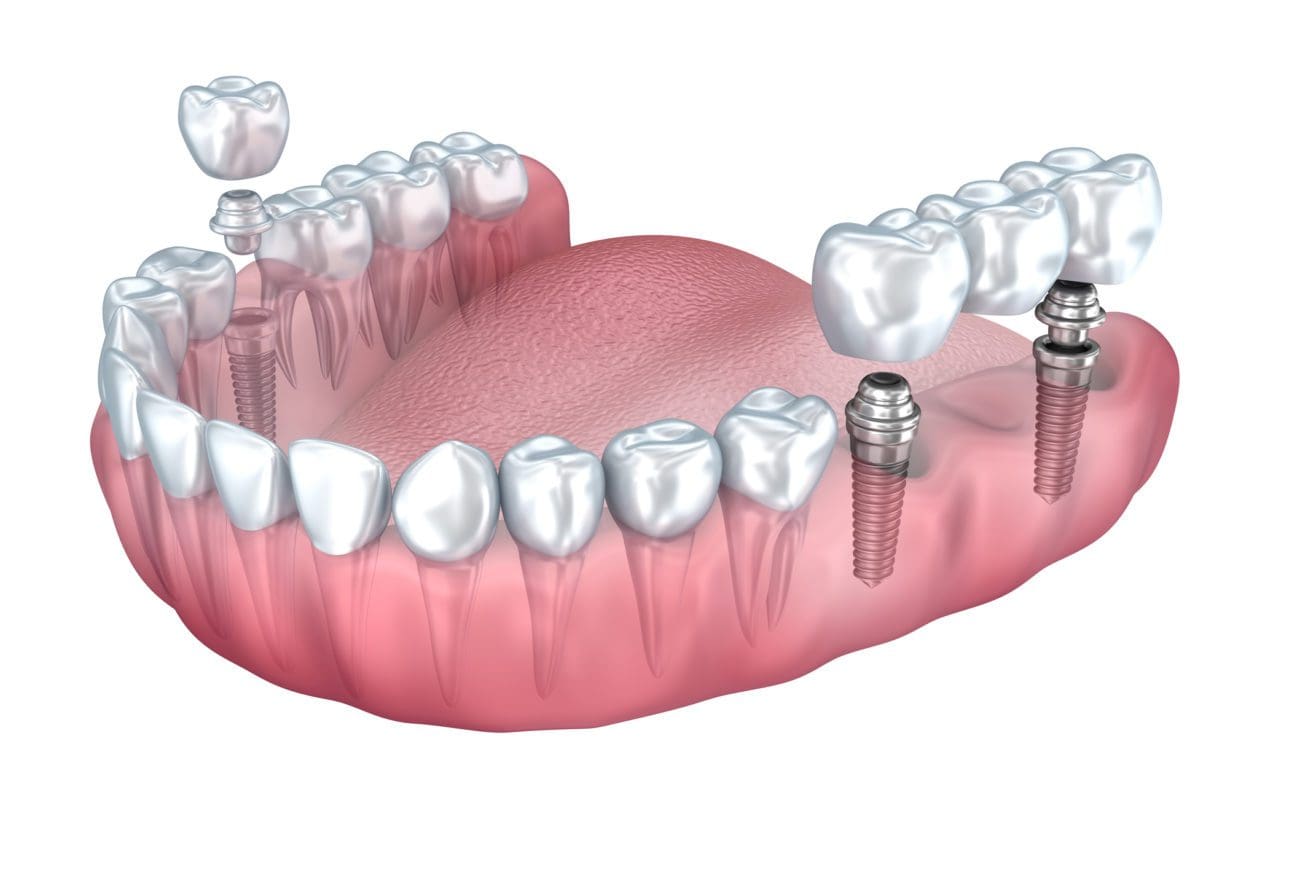An Unbiased View of Dental Sense
An Unbiased View of Dental Sense
Blog Article
Rumored Buzz on Dental Sense
Table of Contents6 Easy Facts About Dental Sense ShownDental Sense Things To Know Before You Get ThisThe Only Guide to Dental SenseSome Of Dental Sense
are clinical gadgets operatively implanted right into the jaw to recover an individual's ability to chew or their look. They supply support for fabricated (phony) teeth, such as crowns, bridges, or dentures. When a tooth is shed because of injury or condition, a person can experience difficulties such as fast bone loss, faulty speech, or modifications to eating patterns that lead to pain.Dental implant systems contain an oral implant body and oral implant joint and might also include an abutment fixation screw. Kids dental. The oral implant body is operatively put in the jawbone in location of the tooth's root. The oral implant abutment is generally affixed to the implant body by the joint addiction screw and expands with periodontals right into the mouth to sustain the affixed artificial teeth
(https://www.twitch.tv/dentalsense1/about)Structure of The Oral Implant System picking oral implants, speak with your oral copyright about the prospective benefits and risks, and whether you are a candidate for the procedure. Points to take into consideration: Your general wellness is an important consider determining whether you are a great prospect for dental implants, for how long it will take to recover, and for how long the implant might remain in area.
Cigarette smoking may influence the healing procedure and decrease the lasting success of the implant. The recovery process for the dental implant body may take numerous months or longer, throughout which time you typically have a short-term abutment in location of the tooth. the dental implant treatment: Thoroughly comply with the oral hygiene directions provided to you by your dental supplier.
Top Guidelines Of Dental Sense
Implant failing can cause the demand for an additional operation to repair or replace the dental implant system. Brings back the ability to chew Restores aesthetic appearance Aids maintain the jawbone from shrinking as a result of bone loss Protects the health and wellness of the surrounding bone and gums Aids keep surrounding (nearby) teeth steady Improves lifestyle Damages to surrounding natural teeth during dental implant placement Injury to the surrounding cells during surgical treatment, such as sinus perforation Injury throughout surgical procedure (for instance, fracture of bordering jawbone) Insufficient function, such as seeming like the teeth do not bite with each other generally A feeling that the tooth hangs or turning in position arising from a joint screw loosening up Implant body failure (looseness of the implant body) due to systemic infection, which may be most likely in clients with unchecked diabetes mellitus due to local infection in bone and gums supporting the dental implant body due to delayed recovery, which may be most likely in patients who smoke Trouble cleaning the gums around the implant, leading to bad dental health Neglected gum condition Post-surgical feeling numb as a result of nerve impingement or damage Constantly alert healthcare suppliers and imaging professionals that you have dental implants before any type of magnetic resonance imaging (MRI) or x-ray treatments.
FDA is not aware of any unfavorable events reported for MRI or x-ray procedures with oral implants. Dental implants systems are usually constructed from materials that adhere to international consensus requirements of the International Company for Standardization (ISO) or ASTM International. These standards have details of what makes a safe product.

A dental implant is a structure that changes a missing out on tooth. With screw-like gadgets, the surgeon inserts a dental implant right into the jawbone, and it functions as an anchor for a man-made tooth, called a crown. A gadget called an abutment connects the fabricated tooth to the dental implant. The crown is custom-made to fit the individual's mouth and match the color of their teeth.
The Greatest Guide To Dental Sense
Some individuals are not eligible for dental implant surgical treatment. It is for oral specialists to run on people with: acute illnessuncontrollable metabolic diseasebone or soft tissue disease or infectionIf these problems are dealt with, an individual can have the surgical treatment. In, oral cosmetic surgeons i was reading this avoid from operating on people with: If people with any one of the above undertake dental implant surgical treatment, there is a higher risk of the implant stopping working.

Dental implant surgery is a personalized process. It's not the same for every person. But the adhering to gives a basic overview of what you can anticipate your dentist, dental cosmetic surgeon, periodontist or prosthodontist to do: Place the implant operatively. Offer you time to recover. Connect the blog post and final crown, bridge or denture.
Next, your surgeon will carefully put the oral implant right into your jaw. If your dental implant is near the front of your mouth, your dental expert will certainly make a short-term tooth for you to put on till you heal.
Things about Dental Sense
Your service provider can tell you what to expect in your scenario. During the healing phase, your jawbone should fuse to the dental implant. This procedure, called osseointegration, is vital for stability and long-term success. This process can take anywhere from 3 to nine months. In many cases, it might take much longer.
Once your implant heals, your dental practitioner can connect the abutment (small connector message) and your last remediation (crown, bridge or denture). This typically takes about one hour to finish and may need a 2nd minor surgery. You should not feel any type of pain during your dental implant procedure due to the fact that your supplier will certainly make use of medication to numb your periodontals.
Report this page